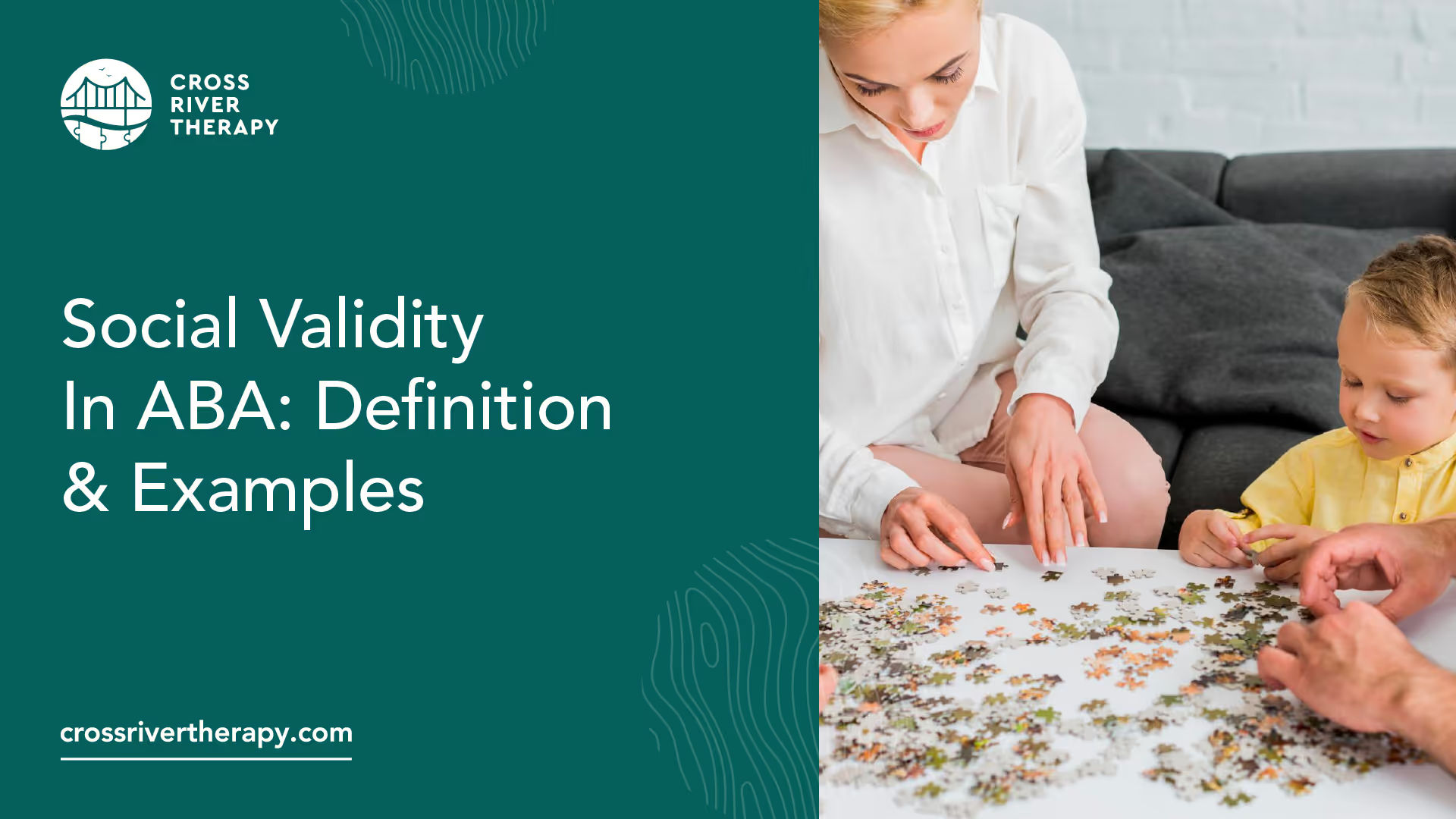Social Validity In ABA: Definition & Examples
Social validity is the acceptance of interventions concerning behavioral changes.


What is Social Validity in ABA?
Social validity is the acceptance of interventions concerning behavioral changes. It's predicated on different viewpoints of clients that receive treatment for disorders like autism, whereby they're later implemented.
Overall, this means that the viewpoint of clients, both the one being treated and their legal caretaker, is essential to carrying out treatment.
Many of the approaches used in ABA involve social validity. The Board of Certified Behavior Analysts, or the BCBA, usually considers it when creating programs for individual clients.
Treatment like ABA must be administered by professionals that have done extensive research, earning the title to legitimately carry out sessions that matter.
In the process of this, behaviors that are and aren't wanted will be identified, later increased, or mitigated as needed.
The science behind social validity was created from the viewpoints of clients and their guardians. ABA owes some of this individual-based approach to assigning therapy to social validity.
Still, validity is subject to change. Changes are requisite on issues that are specific to clients that are provided services. Such factors as environmental, religious, and cultural. Differences can change the validity of what families of the client consider appropriate in different regions.
The primary benefit is that social validity allows for therapy sessions to be individually changed to fit their personality, cultural setting, and personality.
Every child receiving treatment for their disorder is distinctive from the rest, and social validity acknowledges this. For this reason, ABA techniques are outfitted to cater to the characteristics of every client, regardless of how old or young they are.
Examples of Social Validity in ABA
A basic example of social validity is when a patient at an ABA center, with the authorization of their parents, requires that some of the sessions be conducted using their child's favorite home activities, such as drawing.
In another, a patient may exhibit a slower learning curve, whether it's due to the severity of their diagnosis or for a personal reason.
While treating behavioral disorders, therapists quickly learn that the different clients they see learn at different paces.
Based on the region, others might be unable to show initiative in some aspects where another child could. It all depends on the circumstances and characteristics of the diagnosis.
Two Types of Social Validity
The two types of social validity are treatment outcome and treatment accessibility.
Treatment outcome involves a situation where the primary duty is to gauge different areas of a client's personality before and after treatment commences. When changes are found, they're taken into account during and in the planning of ongoing treatment.
Treatment accountability is an integral part of ABA therapy. It's when the effects of interventions are gauged based on their level of failure or success.
When no effect is shown, it's also noted. Once the effects, or lack thereof, are noted, alterations are done to help build on their overall time spent in therapy.
Why Social Validity is Important
Social validity is important because it raises the potential likelihood of success when therapists work with clients taking behavioral courses. It's highly subjective and alternating.
When implemented, it helps to determine when changes are needed in clients and the people that are closest to them.
References:
Recent News
Related articles

Working With Autistic Children: 10 Career Options
Want to work with autistic children? Here are 10 career options for you to consider.

What Is The Age Limit For ABA Therapy In Indiana?
Find out what the age limit is for receiving Applied Behavior Analysis (ABA) therapy in Indiana.

What Is The Age Limit For ABA Therapy In Arizona?
Find out what the age limit is for receiving Applied Behavior Analysis (ABA) therapy in Arizona.

Verbal Operants In ABA: Definition & Examples
In Applied Behavior Analysis, verbal operants are a type of verbal behavior.

Token Economy: Examples & Applications in ABA
A token economy is a procedure that was developed to help reduce maladaptive behaviors and increased desire behaviors by providing a tangible conditioned reinforcer.

Trigger Analysis In ABA: Definition & Examples
Trigger analysis is a segment of ABA therapy where children are taught by therapists to pinpoint the behaviors and emotions that happen before, during, and after an event that takes place.

Variable Ratio Schedule & Examples
A variable-ratio schedule is a random reinforcement where responses are reinforced following varied responses afterward.

Task Analysis In ABA Therapy: Examples & Strategies
Task analysis is a process of teaching that divides complicated activities into sections involving easier steps for students to more easily take.

Stimulus Equivalence In ABA: Definition & Examples
Stimulus equivalence shows how relationships can manifest among different types of stimuli in different situations.

Speech Therapy For Autism: ABA vs. Speech Therapy
ABA therapy can help individuals with speech impairments learn to better identify and utilize the language skills they already have.

Stimulus Control Transfer ABA: Definition & Examples
Stimulus control is defined as an expression used to detail circumstances where a behavior is triggered by the existence or absence of a stimulus.

Social Validity In ABA: Definition & Examples
Social validity is the acceptance of interventions concerning behavioral changes.

